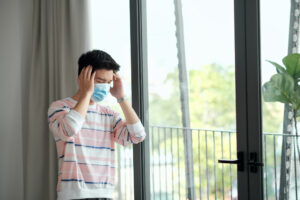 Formaldehyde, a volatile organic compound (VOC), is a common chemical used in various industries, including interior design and furniture manufacturing. Its presence in building materials, furnishings, and household products raises significant health concerns, leading to stringent regulations worldwide. In this article, we will explore the formaldehyde emission standards in Europe and Japan, highlighting their implications for interior design.
Formaldehyde, a volatile organic compound (VOC), is a common chemical used in various industries, including interior design and furniture manufacturing. Its presence in building materials, furnishings, and household products raises significant health concerns, leading to stringent regulations worldwide. In this article, we will explore the formaldehyde emission standards in Europe and Japan, highlighting their implications for interior design.
Understanding Formaldehyde
Formaldehyde is a colorless, pungent gas widely used as a preservative and adhesive in wood products, insulation materials, textiles, and more. Despite its utility, formaldehyde poses health risks, including respiratory issues, skin irritation, and even cancer with prolonged exposure. Consequently, regulating formaldehyde emissions has become a priority to ensure safer indoor environments.
Formaldehyde Standards in Europe

Europe has implemented comprehensive regulations to control formaldehyde emissions since 1985, primarily through the European Union (EU) directives and standards.
E1 Standard
The E1 standard is the most recognized formaldehyde emission standard in Europe and E1 became obligatory for panel production of EPF European Panel Federation members since 2006. It is part of the European Standard EN 13986, which specifies the requirements for wood-based panels used in construction. The E1 classification limits formaldehyde emissions to 0.124 mg/m³ of air, ensuring minimal impact on indoor air quality. This standard is consider safe to be use for indoor environment.
E2 Standard
While E1 is the more stringent, there are also E2 standard, which allow higher emissions. E2 permits up to 1.0 mg/m³. However, these higher levels are generally not recommended for indoor use due to potential health risks. In Singapore, currently there is no regulation for formaldehyde for wood base materials therefore is not surprise to see unrated (formadehyle emission) in some of the wood based materials found in the market. And such wood based materials might contain up to twenty times more than the safe limits.
Formaldehyde Standards in Japan

Japan has also established rigorous formaldehyde regulations to protect indoor air quality, with standards set by the Japanese Industrial Standards (JIS) and the Ministry of Health, Labour, and Welfare (MHLW).
F**** (Four-Star) Standard
The F**** (Four-Star) standard is the highest formaldehyde emission rating in Japan, perhaps the lowest emission in the market before the ENF standard kicking in. Specified under JIS A 5908 for particleboard. This standard limit formaldehyde emissions to less than 0.3 mg/l, compare to Europe’s E1 standard, providing a higher level of indoor air safety.
F*** (Three-Star) Standard
The F*** (Three-Star) standard allows for slightly higher emissions, up to 0.5 mg/l. While still considered safe for indoor use, it is less stringent than the F**** standard.
Current Most Stringent Formaldehyde Emission Standard
The awareness of the harmful causes from formadehyle has been well establish in the consumer market. This leads to the establishment of the highest standard of formadehyle emission in the industry. ENF standard was establish in 2021 and can be said to be the most stringent formadehyle standard at present.
ENF
The ENF grade signifies that no formaldehyde is added during production, and it adheres to a strict formaldehyde emission standard of 0.025 mg/m³. If you’re considering custom cabinets, choosing materials with ENF grade ensures ultra low formaldehyde emissions and promotes indoor air quality.
Implications for Interior Design
Adhering to formaldehyde standards is crucial for interior designers, architects, and manufacturers aiming to create healthy indoor environments. Here’s how these formaldehyde standards influence interior design:
Material Selection

Designers must choose materials that comply with the safe formaldehyde standards (E1) to ensure indoor air quality. This includes furniture, cabinetry, flooring, and wall panels, which are significant sources of formaldehyde emissions.
Certification and Labeling

Products certified to meet formaldehyde standards, such as the E1 in Europe, F**** mark in Japan or in the highest standard ENF, provide assurance of safety. Designers should prioritize these certified products to guarantee compliance and protect occupants’ health.
Innovation and Sustainability

Strict formaldehyde regulations drive innovation in material science, leading to the development of low-emission and eco-friendly alternatives. Interior designers can leverage these advancements to create sustainable and health-conscious spaces.
Consumer Awareness
Increasing consumer awareness about formaldehyde emissions and their health impacts influences market demand. Interior designers can educate clients about the importance of choosing low-emission materials, fostering a preference for safer and greener products.
Conclusion
The formaldehyde standard plays a pivotal role in shaping the safety and quality of interior design products. Both Europe and Japan have established rigorous regulations to control formaldehyde emissions, each with its unique approach and impact. By adhering to these formaldehyde standards, interior designers can create healthier, safer, and more sustainable living environments, ultimately enhancing the well-being of occupants.
Ready to turn your healthier home dreams into reality? Book an appointment with E³.SPACE, and let us bring your vision to life.
